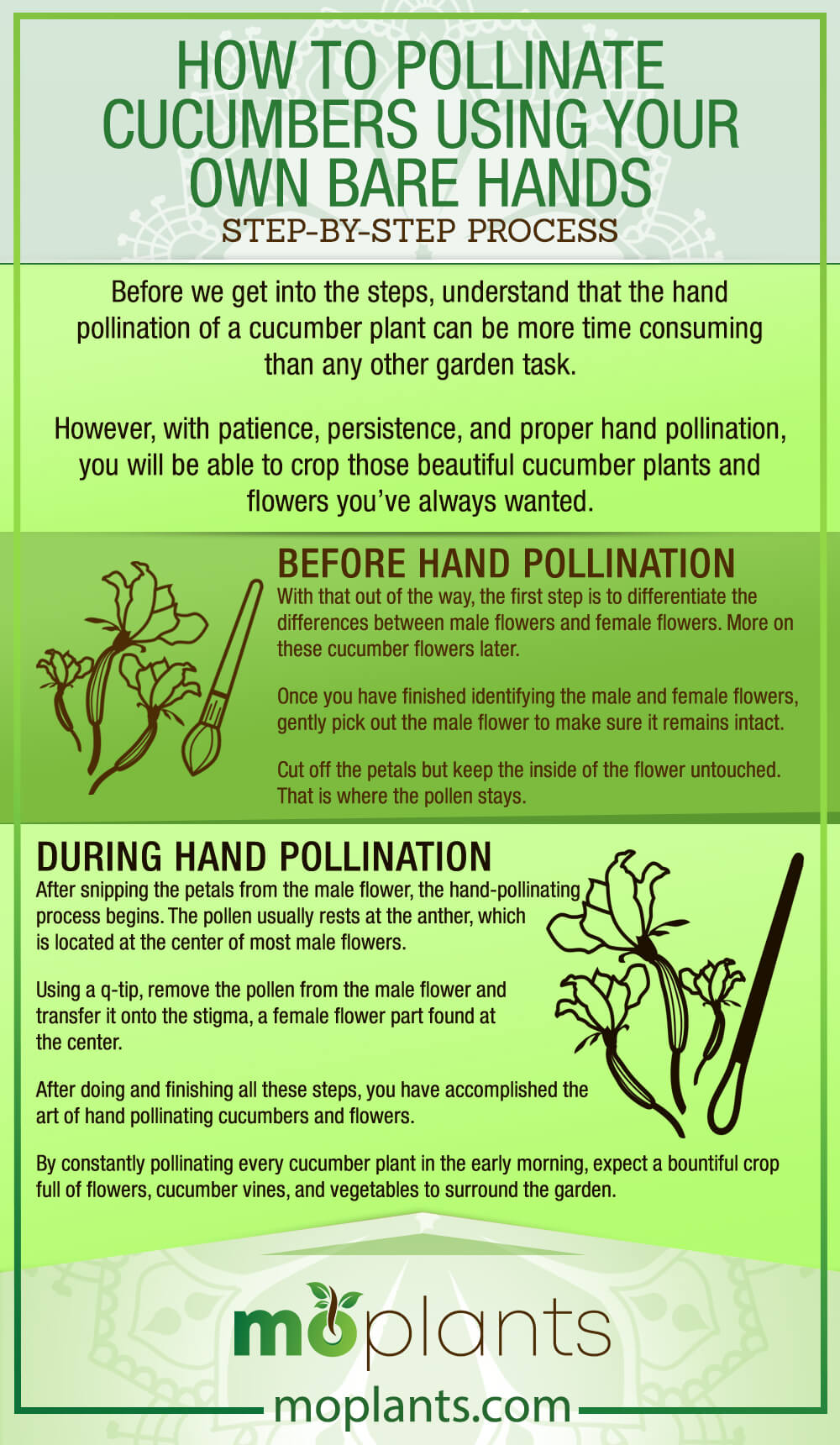Pollinating cucumber plants is important for them to produce fruit.
Unfortunately, you cannot force bees and your other insect friends to pay a visit to your garden for pollination purposes.
But don’t worry. We’re here to help you hand pollinate cucumbers by providing all the steps and information needed to ensure a healthy and bountiful crop.
Step-by-Step Process
Before we get into the steps, understand that the hand pollination of a cucumber plant can be more time consuming than any other garden task.
However, with patience, persistence, and proper hand pollination, you will be able to crop those beautiful cucumber plants and flowers you’ve always wanted.
Before Hand Pollination
With that out of the way, the first step is to differentiate the differences between male flowers and female flowers. More on these cucumber flowers later.
Once you have finished identifying the male and female flowers, gently pick out the male flower to make sure it remains intact.
Cut off the petals but keep the inside of the flower untouched. That is where the pollen stays.
During Hand Pollination
After snipping the petals from the male flower, the hand-pollinating process begins. The pollen usually rests at the anther, which is located at the center of most male flowers.
Using a q-tip, remove the pollen from the male flower and transfer it onto the stigma, a female flower part found at the center.
After doing and finishing all these steps, you have accomplished the art of hand pollinating cucumbers and flowers.
By constantly pollinating every cucumber plant in the early morning, expect a bountiful crop full of flowers, cucumber vines, and vegetables to surround the garden.
Infographics

Different Types of Cucumber Flowers
Besides giving you the necessary steps that need to be done to develop cucumbers, we also feel the need to give you supplementary information such as flower types.
These will improve your pollinating experience so that each cucumber plant will establish an abundant harvest.
With the being said, it is important to remember that every cucumber plant contains two flower types. Let’s go over the male and female flowers one by one.
Male Flower
Male flowers are usually the first to open their petals on a cucumber vine. They outnumber the female flower on most cucumber plants.
Also, they have a 10-day headstart compared to their female counterparts in terms of when they open. Most male flowers grow in shorter vines and groups of three or five.
Female Flower
Female flowers may not come in bunches, but unlike male flowers, they produce fruit. It comes in the form of a stem-like shape.
While the male counterparts huddle up in small clusters, the female flower grows on its own in a single long stem.
Indeed, it epitomizes the “strong, independent woman” label.
Why Is Hand Pollinating Cucumbers Important?
Pollination plays a vital role in the survival of most plant varieties and other related vegetables. Around 80 percent of plant-based products require pollination from animals and insects.
Unfortunately, bees and other pollinating insects are not attracted to the cucumber plant. As a result, the chances of cucumber fruit developing are minimal to non-existent.
If the bees and other garden insects prefer transferring pollen from other vegetables, hand-pollinating cucumbers is your best bet at a fully harvested crop.
In fact, if you hand pollinate each cucumber plant on your own, you might even produce more cucumbers that are larger in size.
Also, transferring the pollen yourself will result in more established vines and more fertile female flowers.
So if you want a garden full of cucumbers that fully fruit, you can’t rely on the bees to pollinate each flower.
Instead, you’ve got to do the work of hand pollinating every cucumbers plant and flower with your own bare hands.
Conclusion
We hope you enjoyed going over the different steps of cucumber pollination for the emergence of your garden.
May you be convinced in doing pollination every day to guarantee a bountiful garden full of prospering fruits and cucumbers.
For more questions, inquiries, or gardening information, please feel free to contact us.

